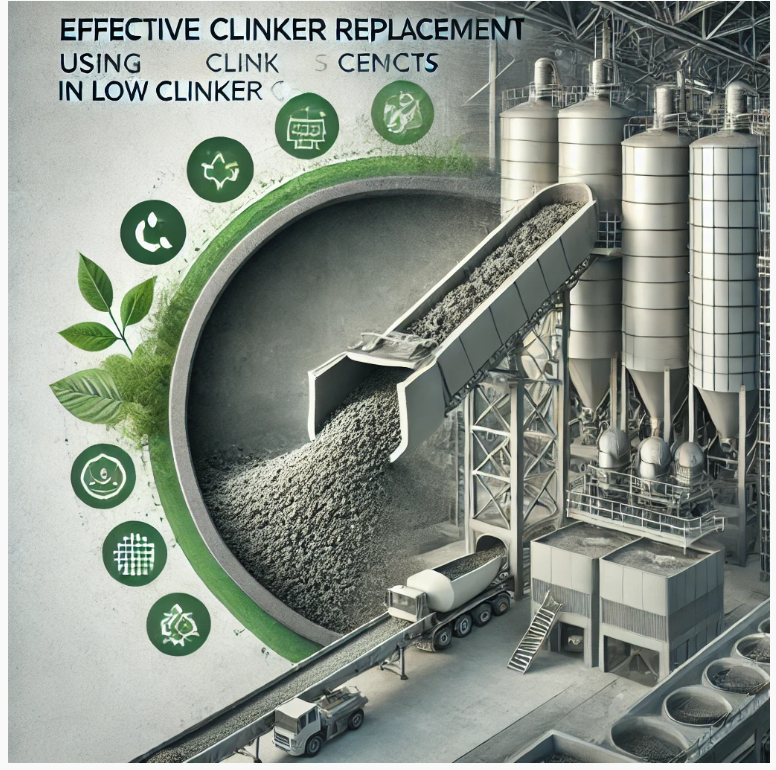Contents
Effective Clinker Replacement Using SCMs in Low Clinker Cements

TO Download this post and all the books and excel sheets and my personal notes and presentations I collected about cement industry in the last 30 years click the below paypal link
Authors: Sreejith Krishnan, Arun C Emmanuel, Shashank Bishnoi
In recent years, the cement industry has been increasingly focused on reducing its environmental footprint. One of the most effective ways to achieve this goal is through the replacement of clinker in cement with Supplementary Cementitious Materials (SCMs). These materials can significantly reduce the carbon dioxide emissions associated with cement production while maintaining or even enhancing the properties of cement.
What is Clinker and Why Replace It?
Clinker is a key ingredient in the production of cement. However, its production is energy-intensive and leads to significant CO2 emissions due to the calcination process. By reducing the amount of clinker in cement and replacing it with SCMs such as fly ash, slag, or natural pozzolans, we can achieve substantial environmental benefits.
Benefits of Using SCMs
- Reduction in CO2 Emissions: SCMs help reduce the carbon footprint of cement production. By using industrial by-products or naturally occurring materials, cement manufacturers can lower their reliance on clinker, which is responsible for a large portion of the industry’s greenhouse gas emissions.
- Improved Durability: Many SCMs enhance the durability of concrete, improving its resistance to sulfate attacks, chloride ingress, and other forms of deterioration. This can lead to longer-lasting infrastructure and fewer repair needs.
- Cost Savings: In many cases, SCMs can be sourced more cheaply than clinker, leading to cost savings for manufacturers.
- Resource Efficiency: Utilizing SCMs promotes resource efficiency by recycling industrial by-products like fly ash and slag, which would otherwise end up in landfills.
Common SCMs Used in Cement
- Fly Ash: A by-product of coal-fired power plants, fly ash is a popular SCM due to its pozzolanic properties and wide availability.
- Slag: Produced from blast furnaces, slag can replace a portion of clinker and improve the long-term strength of concrete.
- Silica Fume: A by-product of silicon production, silica fume is known for enhancing the strength and durability of concrete.
- Natural Pozzolans: These materials, such as volcanic ash, have been used in construction for centuries and continue to be a viable option for clinker replacement.
Case Studies of Clinker Replacement
Various case studies across the world have shown the potential of SCMs to significantly reduce the carbon footprint of cement production. For example, the use of fly ash and slag in European countries has been widely adopted due to environmental regulations and sustainability goals.
Challenges and Future Outlook
While SCMs offer a promising solution for clinker reduction, there are challenges to their widespread adoption. These include the variability in material availability, quality control issues, and the need for changes in production processes.
However, ongoing research and development are expected to overcome these hurdles, making SCMs an even more integral part of sustainable cement production.
Conclusion
Replacing clinker with SCMs in cement production is one of the most effective ways to reduce CO2 emissions in the construction industry. As technology and research continue to evolve, the future of low-clinker cements looks bright, offering both environmental and economic benefits.
TO Download this post and all the books and excel sheets and my personal notes and presentations I collected about cement industry in the last 30 years click the below paypal link
